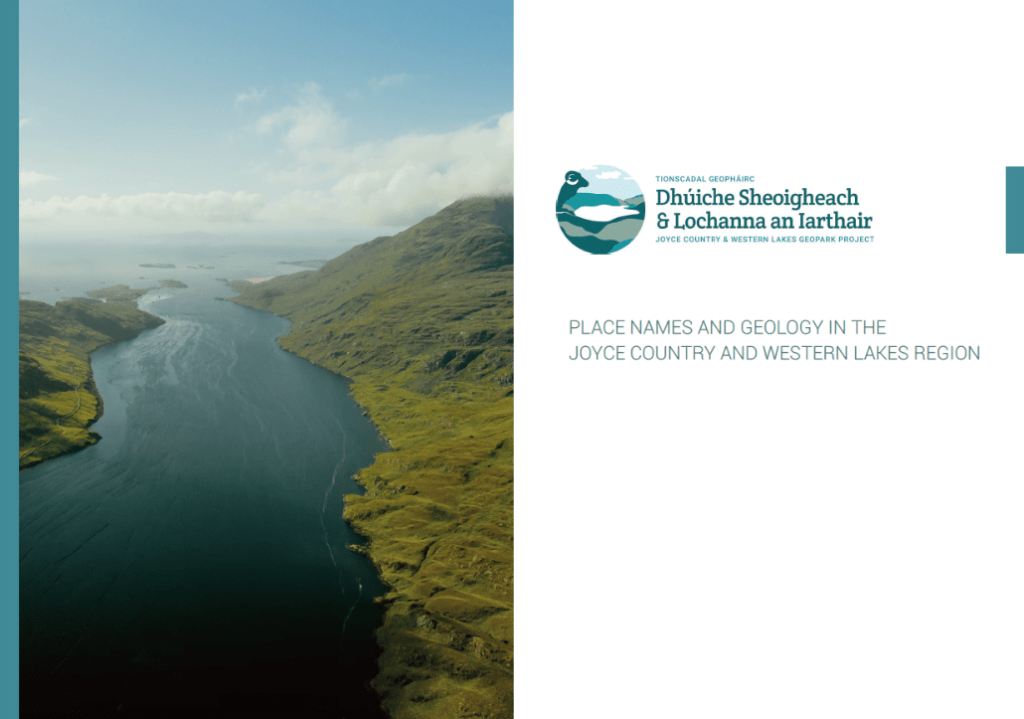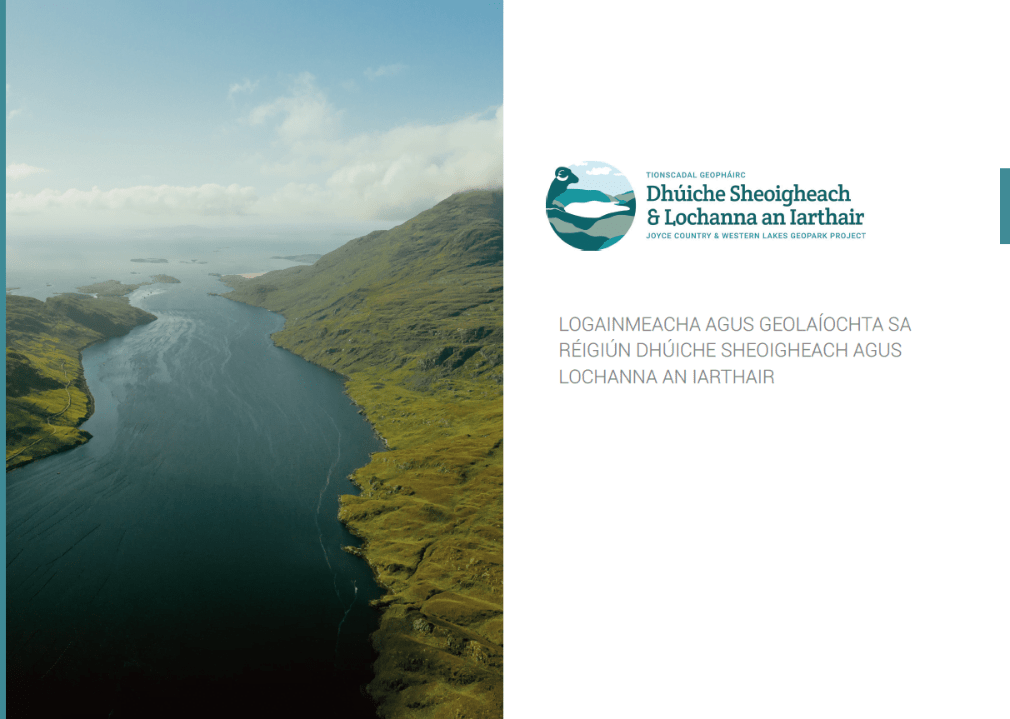LIVING

Gaeltacht areas in Ireland are areas where the Irish language is the dominant language for home, education, business and social activities. About 60% of the area of the geopark is part of a Gaeltacht which includes 7 of our communities. Irish is the living and working language for many even outside of the Gaeltachts being the first national language of Ireland and is an intrinsic part of the culture and tradition. None of the three UNESCO Global Geopark projects in Ireland are in Gaeltacht areas.
The Irish language has also contributed to the scientific language of glaciology. As Ireland is an easily accessible recently glaciated landscape, early work on glacial landforms was carried out here and some of the landforms were given names derived from Irish. Glacier rounded and elongated low ridges are known internationally as drumlins and there are many of them in this region, but the name comes from the Irish word “droimainn” meaning small ridge.
Eskers are long winding ridges of gravel and are a common feature of the Irish landscape. The word comes from the Irish word “eiscir” meaning a dividing ridge.
Corrie is one of the terms used for a mountain glacier cirque and comes from the Irish “coire” meaning a large pot or a cauldron.

Townland names, most of which are derived from Irish, are usually beautiful descriptives of physical features of the local geography. Indeed, some actually relate to the local geology. You can learn more about this connection through our bilingual English/Irish booklet published in 2020 on the subject. This publication follows and adds to the expert works of the late Fiachra McGowan and the late Tim Robinson by focussing on the geological and geomorphological features recorded in place names in Ireland with more specific examples from the region.
Our region has fascinating examples of such links like in Cloghbrack (an Chloch Bhreac – the speckled rock) or Aill Dubh (Black Cliff) which directly link with the colour of their local bedrock. Places like Ballintubber (Baile an Tobar – the townland of the well) tell us about our karst landscape in limestone and others like Clogher (an Clochar – the rocky place) remind us of the ice-sheets that left stones in our soil. The booklet also provides tools to research your local geology all over Ireland with a glossary of frequent terms used.
You can download the pdf of the booklet in either the Irish or English version. Some printed copies are available on request. Click on the images below to open up the pdf.
As part of our June 2021 conference, a live discussion between Stiofán Seoighe, language planning officer for Dhúiche Sheoigheach and Tuar Mhic Éadaigh, Benjamin Thébaudeau, geopark geologist, Dominic Ó Móráin, geopark tourism officer, Gearóidín Ní Ghrúinéil, one of the directors of the JCWL GeoEnterprise and Sheena Duddy of the Ballinrobe Gaeltacht Service Town initiative took place. The event started with a beginner’s type cúpla focal conversation followed by an introduction to a few terms relating to the landscape, geology and place names. Stiofán then outlined key aspects of the language plan and ideas for engaging and strengthening the use of the languages and Sheena mentioned the ongoing plan to make Ballinrobe a Gaeltacht Service town. Watch the discussion by clicking here.
Here are some useful Irish words and phrases to help you make your way around the Gaeltacht areas of our geopark.
Greetings
Irish
Fáilte/ Céad Míle Fáilte
Dia duit
Slán
Pronounced
“fall-cha”
“jee-uh ggwitch”
“slaan”
Meaning
Welcome/ 100,000 Welcomes
Hello
Goodbye
Everyday words and expressions
Irish
An Lár
Gardai/ Garda
Garda síochána
Sláinte
Mná
Fir
Céilí
Craic
Le do thoil
Go raibh maith agat
Tá
Níl
Tá brón orm
Gabh mo leithscéal
Oscailte
Dúnta
Pronounced
“on lore”
“gar-dee”/ “gar-dah”
“gar-dah shee-oh-cahn-nah”
“slaan-cha”
“muh-naw”
“fear”
“kay-lee”
“crack”
“leh duh hull”
“guh rev moh og-ut”
“taw”
“kneel”
“taw brone ur-um”
“guh-muh-leh-sh-kale”
“uh-skull-cha”
“doon-ta”
Meaning
Town Centre e.g. on a bus to go into town
Police
Police
Cheers/ To Your Health e.g. when toasting a drink
A traditional social dance event or party
Fun/ music/ good times/ entertainment
Please
Thank you
Yes
No
I’m sorry/ I’m sad
Excuse me
Open
Closed
Road signs
Irish
Géill Slí
Stad
Téigh
Go Mall
Pronounced
“gail-shlee”
“staw-id”
“tay”
“guh moll”
Meaning
Yield right of way (roadsign)
Stop (roadsign)
Go (roadsign)
Slow (roadsign)
For further information on the language or to learn it online or through a local course, follow this link.

